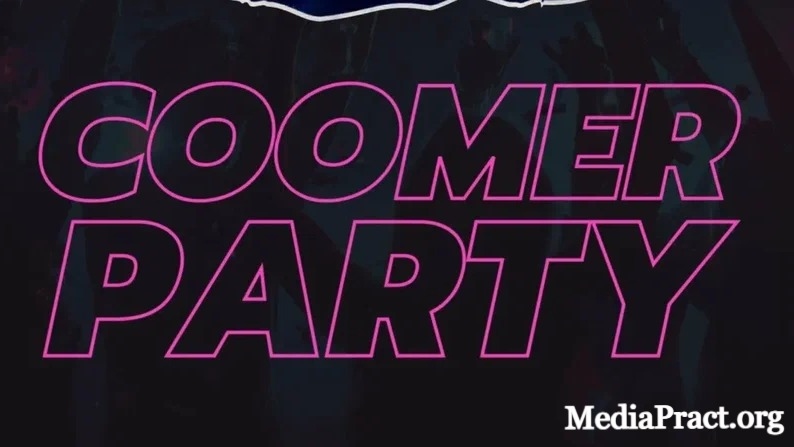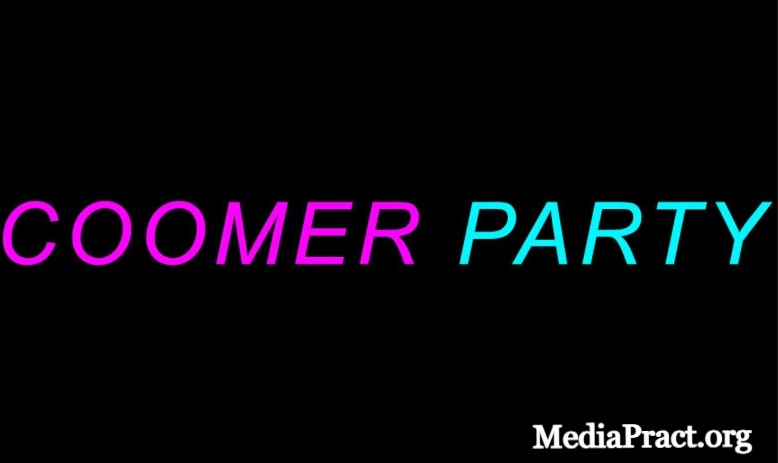Introduction
In the ever-evolving landscape of internet culture, various trends and communities have emerged, each bringing unique aspects of entertainment, humor, and social interaction. One such trend is the concept of the “Coomer Party.”
While it may sound unfamiliar to some, this term has gained traction across different online platforms, sparking curiosity and discussion.
In this article, we will explore what the Coomer Party is, how it developed, and the broader cultural impact of this phenomenon.
What is a Coomer Party?

A Coomer Party refers to an online event or gathering where participants engage in shared experiences, often centered around specific internet culture themes, humor, or collective activities.
The name “Coomer” is used in internet slang to describe an individual who excessively consumes certain types of media, often linked to internet-driven behaviors.
The term originated from meme culture and, over time, evolved into a larger concept that represents a particular kind of online community engagement.
While the Coomer Party concept is often viewed in a playful or humorous light, it also reflects certain social dynamics present within online spaces. These gatherings, whether on social platforms or dedicated online communities, allow individuals to come together for a shared experience based on humor, memes, or certain digital trends.
The Origins of the Term “Coomer”
The term “Coomer” itself was coined from meme culture, where it gained popularity as a way to describe internet users who were perceived to engage in overconsumption of certain media.
It was initially used to poke fun at individuals who seemed to prioritize one particular type of content over others, often resulting in a stereotype of someone overly preoccupied with specific online behaviors.
Over time, the term “Coomer” evolved into a broader cultural reference that reflected the way online communities formed around certain behaviors or tendencies.
The idea of the Coomer Party emerged as an extension of this concept, creating a virtual space where individuals could share in the humorous, sometimes satirical, celebration of certain internet-driven trends.
The rise of meme culture and the growing reliance on online communities for entertainment and social interaction played a significant role in the evolution of the Coomer Party.
This shift reflected the way that digital spaces increasingly became places for people to find like-minded individuals, connect over shared interests, and participate in collective experiences.
Virtual Communities and Their Role in Coomer Parties
One of the driving forces behind the popularity of Coomer Parties is the growing trend of virtual communities.
With the proliferation of social media platforms, chat rooms, and live streaming services, individuals can now easily connect with others who share their interests.
The Coomer Party, as a virtual gathering, taps into this sense of connection, offering a space where people can engage in shared experiences, often centered around humor, memes, or specific cultural trends.
These parties are typically hosted on platforms such as Discord, Twitch, and other digital spaces that allow for live interactions and discussions. Participants can join group chats, enjoy live streams, and contribute to the conversation in real time, fostering a sense of community and belonging.
The appeal of these virtual spaces lies in the fact that they offer anonymity and a platform for self-expression, making it easier for people to participate without the concerns that come with face-to-face interactions.
While virtual communities like these can offer a sense of belonging and connection, they also raise important questions about how online spaces shape social behavior.
The Coomer Party trend, along with other digital gatherings, reflects a broader shift toward online engagement, where people increasingly seek validation, entertainment, and interaction in virtual environments.
The Cultural Influence of Coomer Parties
The Coomer Party phenomenon is more than just a digital trend—it is part of a larger cultural movement that reflects the growing influence of internet culture on everyday life.
As digital spaces become more integrated into our daily routines, events like Coomer Parties highlight how technology and social media platforms are reshaping the way we engage with others.
One of the key aspects of Coomer Parties is their ability to create a shared, communal experience that transcends physical boundaries.
In many ways, these parties are emblematic of the changing nature of social interaction, where virtual connections often replace in-person engagements. This shift has led to new forms of entertainment, socialization, and even identity creation.
However, the influence of digital trends like the Coomer Party also brings attention to the challenges of online engagement.
Critics argue that the rise of virtual communities can contribute to feelings of isolation or detachment from the physical world.
In particular, the increasing reliance on digital platforms for socialization may lead to a disconnect from real-world relationships and interactions, potentially impacting mental health and overall well-being.
The Impact of Digital Trends on Society

As virtual communities like Coomer Parties gain popularity, they also spark conversations about the broader implications of digital culture.
The rise of meme-driven gatherings and shared experiences online speaks to the power of digital platforms in shaping how people connect and communicate.
These trends are indicative of a larger shift toward a more digital-centric society, where the lines between the online and offline worlds continue to blur.
At the same time, these shifts raise important questions about the impact of digital trends on individual behavior.
For example, how does participation in online events like Coomer Parties influence social dynamics or affect one’s sense of identity? Is the increased focus on digital communities altering the way we view relationships and human connection?
Furthermore, discussions about the ethics of online communities and digital entertainment have become more prevalent.
As these communities grow, there are ongoing debates about the role of social media platforms, the content shared within them, and the potential consequences for mental health and social well-being.
The Future of Coomer Parties and Virtual Communities
Looking ahead, it is clear that virtual communities and online gatherings like Coomer Parties will continue to evolve as technology advances. The integration of new technologies, such as virtual reality (VR) and augmented reality (AR), could further shape how these parties are experienced.
With VR, participants could experience more immersive, interactive environments, creating even more complex and engaging digital experiences.
Additionally, the rise of influencer culture and the growing prominence of content creators on platforms like YouTube, Twitch, and Instagram could play a significant role in the future of Coomer Parties.
As these creators build larger, more dedicated fan bases, the communities surrounding them may become more integrated into the digital landscape, influencing how virtual events are organized and experienced.
As these communities continue to evolve, it will be important to monitor the social and psychological effects of digital engagement. While virtual spaces can offer a sense of connection and belonging, they also present challenges related to mental health, personal identity, and the nature of human relationships.
Conclusion
The Coomer Party is a fascinating example of how digital trends and internet culture are reshaping the way we interact, socialize, and form communities.
While these online gatherings provide a space for individuals to connect over shared interests and experiences, they also highlight broader societal shifts toward virtual engagement and digital entertainment.
As the digital world continues to expand and evolve, so too will the nature of virtual communities like Coomer Parties.
These events are more than just passing trends; they are a reflection of the growing influence of technology on our social lives.
By understanding the dynamics of these online spaces, we can gain a better understanding of the future of digital culture and its impact on society.






















+ There are no comments
Add yours